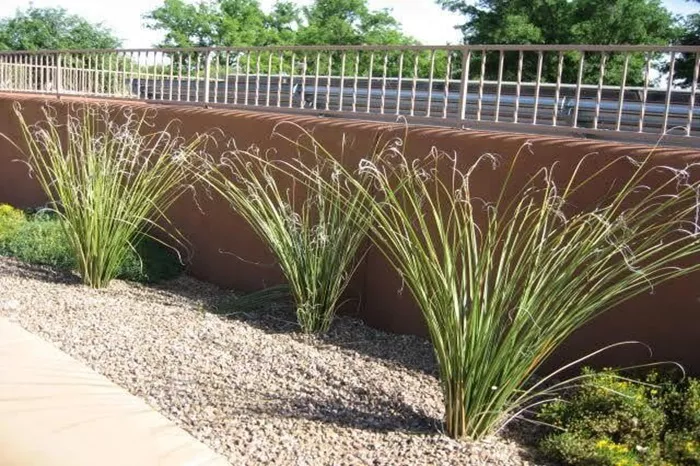Desert Monsoon Season Brings Rain, Thunderstorms, and an Increase in Weeds.
The monsoon season in the desert delivers much-needed rains, impressive thunderstorms, vibrant wildflowers, and stunning rainbows. However, it also brings an unwelcome surge of weeds.
In landscaping, the term ‘invasive’ refers to non-native plants that spread aggressively in environments similar to their native habitats. These plants often flourish rapidly, overwhelming local flora.
Arizona’s roadsides are now dominated by invasive bunch grasses. While these grasses, such as those with silvery plumes, may look attractive when blooming, they pose serious problems. They can fuel severe wildfires, destroy wildlife habitats, and outcompete native plants.
Buffelgrass (Pennisetum ciliare) is a prime example. This plant not only increases fire risk but also competes with native vegetation for moisture, making it difficult for even large trees to survive.
Other problematic invasive species include fountain grass, Sahara mustard, pampas grass, Canada thistle, red brome grass, and saltcedar trees.
Fountain grass (Pennisetum setaceum) has spread beyond desert roadsides into residential areas, street medians, and private yards. After blooming, it releases numerous seeds that are carried by birds, wind, and other animals. Despite its continued sale in many nurseries, removing it requires persistent digging.
Sahara mustard and Russian thistle are commonly known as ‘tumbleweed’ and are spreading eastward from California. Sahara mustard, in particular, can overwhelm entire wildflower beds.
To combat invasive grasses, consider replacing them with non-invasive alternatives such as deergrass (Muhlenbergia rigens), beargrass (Nolina macrocarpa), blue grama (Bouteloua gracilis), or sideoats grama (Bouteloua curtipendula).
Saltcedar (Tamarix aphylla), a large evergreen tree, is another invasive species. It forms dense thickets in riparian areas and replaces native vegetation. Additionally, its leaf litter increases soil salinity, further harming local plant life.
To manage landscape weeds, it is best to pull or dig them out. Ergonomic tools, like the hula hoe, can make this task easier and protect your back.
Organic gardeners often use undiluted cider vinegar to kill weeds. Other methods include boiling water, salt solutions, or carefully applied bleach. It’s important to use these substances sparingly, avoid overspraying near other plants, and be mindful of wind direction.


